Housing market uncertainty as household formation grows and population growth declines

The US Federal Reserve's recent analysis of household formation shows there's been a structural decline in living with roommates and non-family members since the beginning of the pandemic and a rise in other living arrangements, including living alone. This partly explains the ongoing boom in housing demand, as the consequent increase in headship rate (ratio of households to population 16+) means more households chasing an already limited housing stock. Yet despite that increasing demand in a tight housing market, the macro demographic picture is moving in the opposite direction, muting the demand stimulus.
Figure 1 below shows a shift in the composition of living arrangements between pre- and post-pandemic. We see here a clear drop in living with roommates and non-family members.
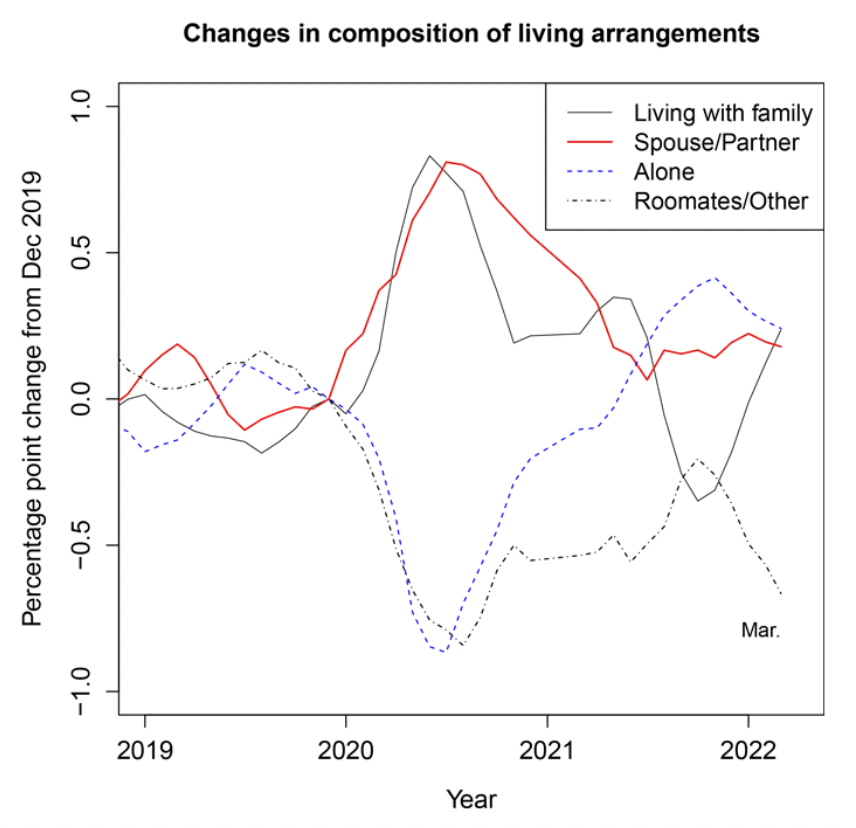
Figure 2 shows the evolution of the headship rate since 2000. We see clearly the impact that the 2008 housing crisis had on reducing the number of households per capita, and again the impact that the pandemic initially had. In Figure 1 above, we see that the pandemic drove increased coupling, as the rate of living with a spouse or partner skyrocketed, and that it similarly drove many to move in with family. Living alone and with roommates were the clear losers.
But not for long. As quickly as those trends spiked, so too did they dive. The one exception in all of this is that the choice to live with roommates and non-family has not recovered to its pre-pandemic level.
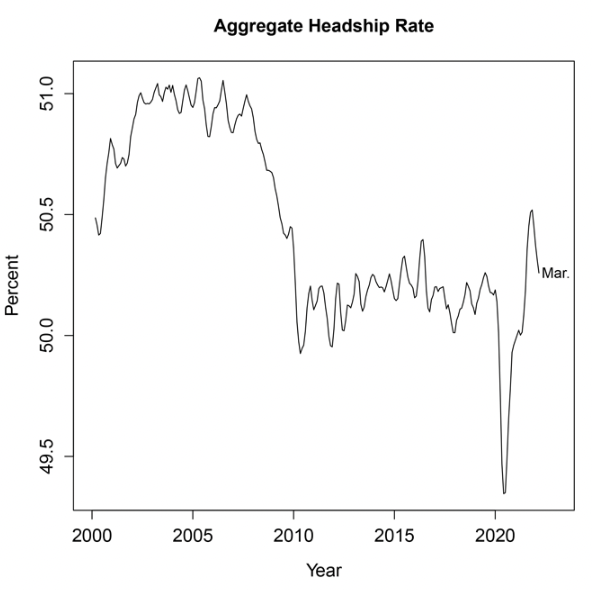
The rise in headship rate since mid-2020 goes a good way to explaining the boom we are seeing today in demand for housing on both the rental and for-sale sides. The material conditions for that demand were partly made possible by pandemic era public subsidies and, in recent months, by the roaring recovery of the labor market.
Figure 3 below breaks the evolution in headship rate down by age group. Most of the action in the early months of the pandemic was concentrated in the 16-30 age bracket, but there has also been a slow atrophy in the rate for older people.
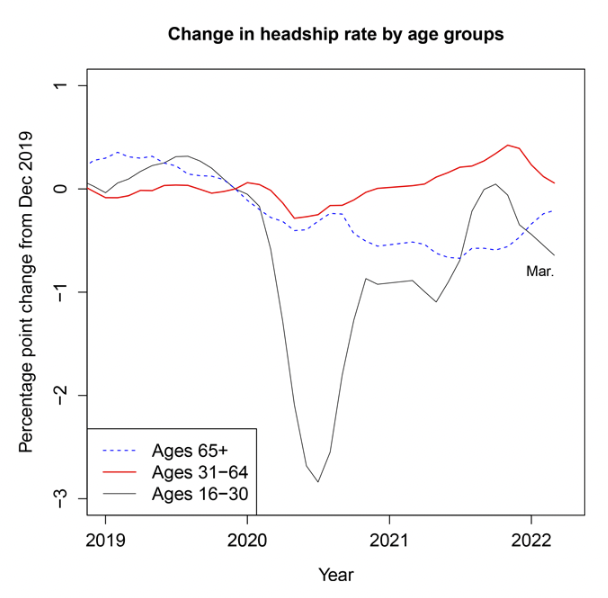
Labor market participation and employment have likely played big roles here. A separate Fed analysis shows that, while unemployment spiked in the early months of the pandemic, it rose particularly sharply for younger workers (see Figure 4 below).
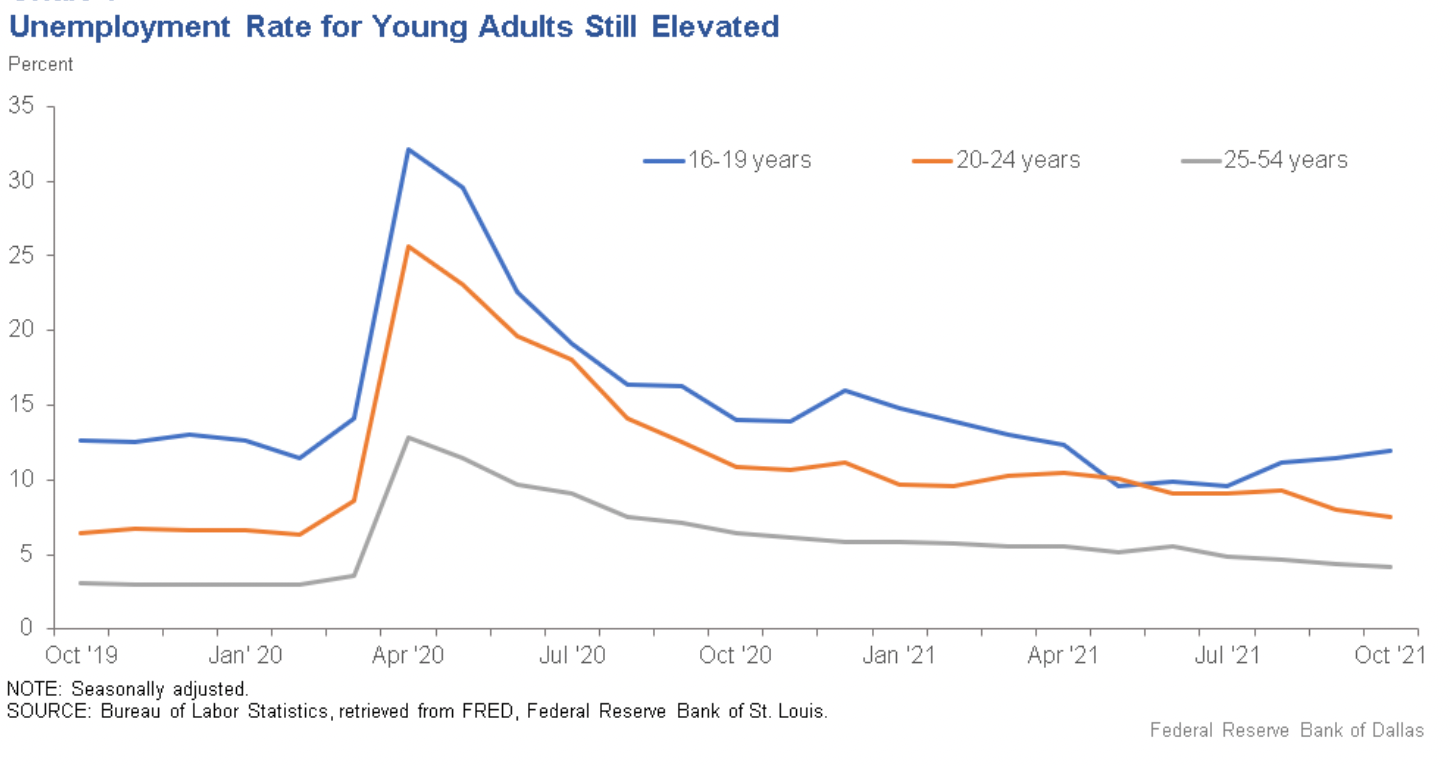
For their part, older workers simply haven't returned to the workforce at anywhere near their pre-pandemic participation rate, according to a third study from the Fed. Figure 5 shows that the majority of the current gap in US labor market participation is explained by the ongoing absence of workers aged 65+ compared to their pre-pandemic participation rate.

The higher unemployment rates and lower participation rates have knock-on effects for younger and older workers' capacity to form and sustain households independent of others, perhaps even as roommates with one another.
How all of this shakes out as the Fed aims to destroy demand and engineer a light recession remains to be seen. It's unlikely the Fed will allow the roaring labor market to continue unabated given the risk of a wage-price spiral. But it's also unclear just how much unemployment will be created, how many will be pushed out of the labor market altogether, and what the distributional consequences will be across social groups.
All of this happens against a backdrop of a much larger demographic shift that we need to keep on our radar – a declining population growth rate. As Figures 6 and 7 below show, the American population has been growing a lower and lower rate since 2016, in large part due to declining international immigration.
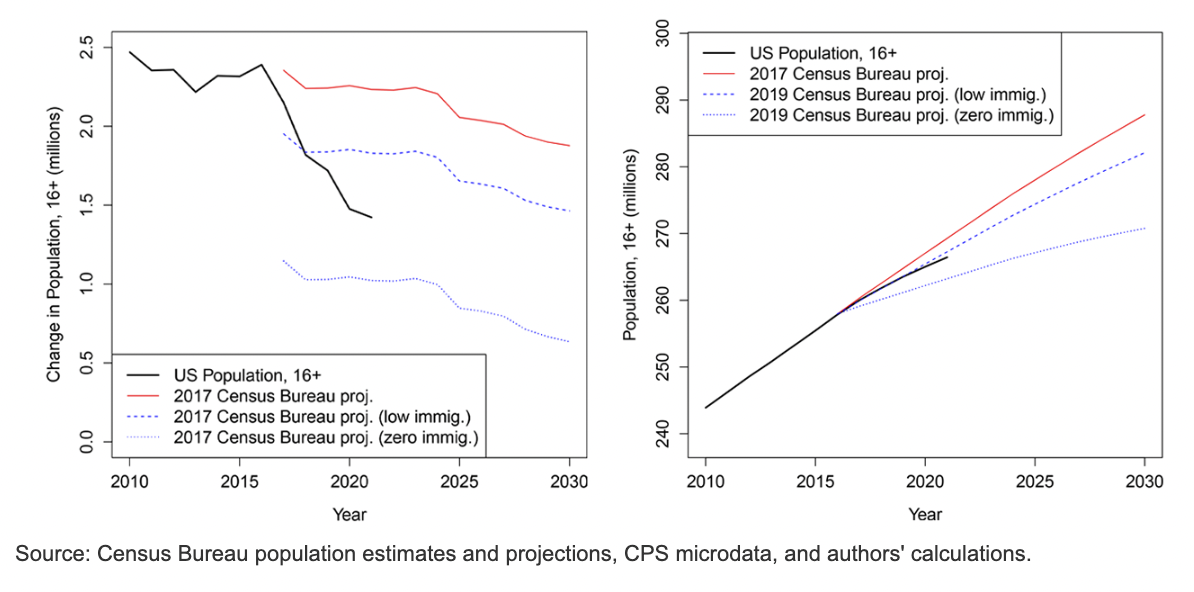
So while an increase in the headship rate signals rising demand for housing, the larger context of declining population growth rates signals just the opposite. TBD how all this shakes out in coming years.